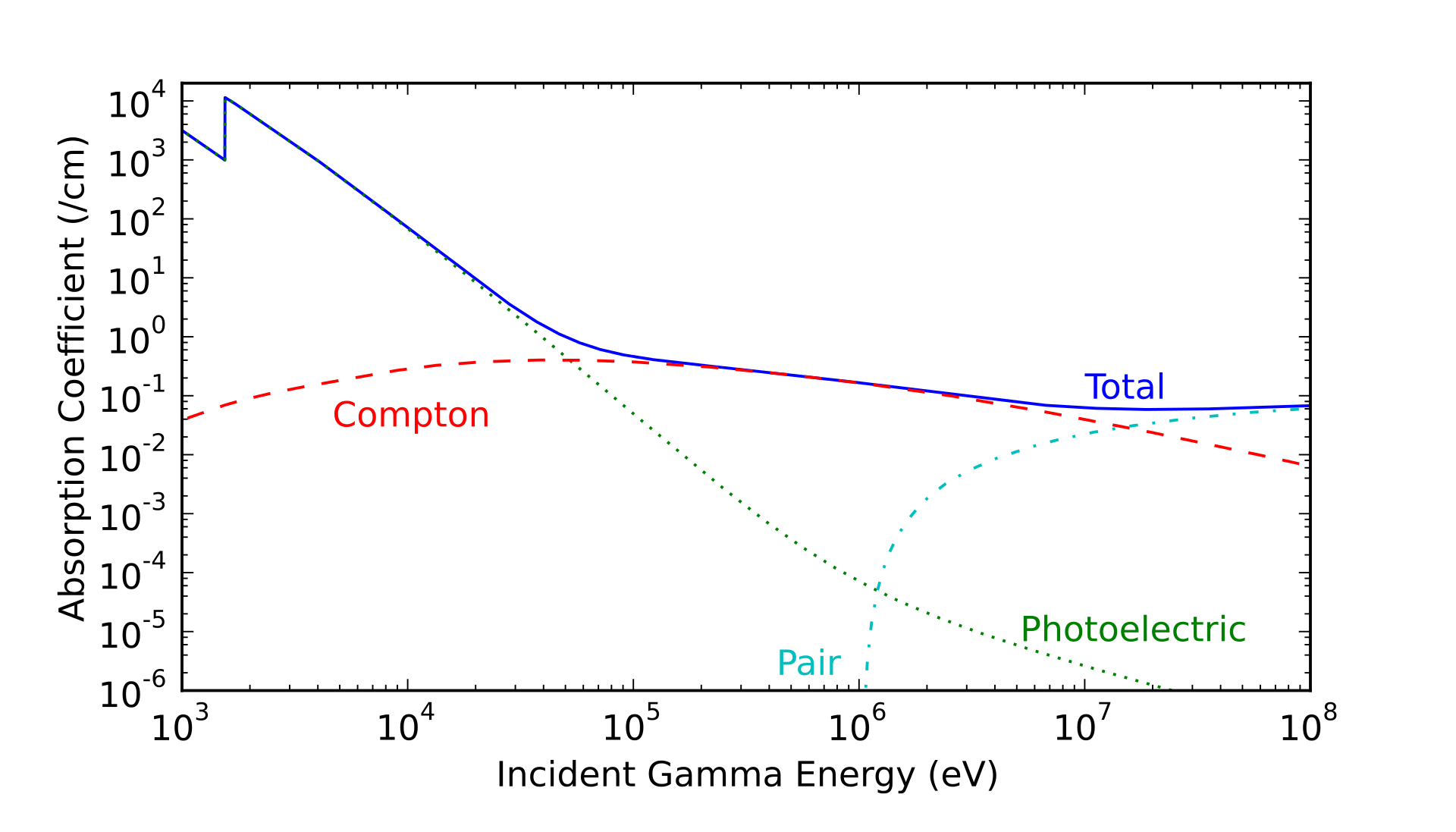For the specific case of gamma/x-rays, one way to look at them is by the relative cross sections of the ways they can interact with matter. [Here (from wikipedia)][1]Here (from wikipedia) is a graph of such a thing for high energy photons interacting with aluminium:
[![absorption cross sections for gamma ray interactions][2]][2]
The blue line is the total absorption coefficient, and both axes are on log scales. You can see that at low energy the photoelectric effect dominates: the photon hits an electron and it absorbs essentially all of the energy, ejecting it from the atom. Next is the Compton scattering, which is fairly flat over a huge energy range. This happens when a photon scatters off an electron, losing some but not all of its energy to the electron.
The one hard limit here is the minimum photon energy required for pair production. This is when a photon, in the strong electric field near the nucleus, is converted into an electron and a positron (other particle-antiparticle pairs are possible at higher energies, but this is the lowest energy one). To do this the photon must have energy equivalent to twice the electron mass, $2 \times 511 \space\mathrm{keV}$ due to our old friend $E = mc^2$. The thing that's kind of interesting to me is that although the x-ray/gamma ray distinction varies by field, it seems that no one actually uses this objective hard limit to distinguish between them. Wikipedia claims that astronomers make the cut for x-ray astronomy to gamma ray at $100 \space\mathrm{keV}$, which is an order of magnitude lower.
The point is this is the kind of thing that makes sociologists say that science is a social construct: If there were a society in alpha centauri doing science, would they make a distinction between photons above and below $100 \space\mathrm{keV}$? almost certainly not. There's some physical basis to where we make the distinctions, but in large part it's due to specific quirks of history. [1]: https://en.wikipedia.org/wiki/Gamma_ray#/media/File:Al-gamma-xs.svg [2]: https://i.sstatic.net/1YWwf.png
